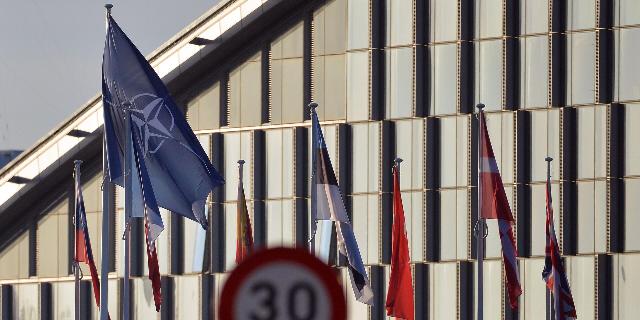CBC: NATO faces the question of choosing a rearmament strategy
NATO countries are increasingly wondering what strategy to follow in the issue of rearmament, CBS reports. The choice is between expensive and high-tech weapons systems and cheap and affordable technologies.
Murray Brewster
Should Canada focus on expensive state—of-the-art systems, rather than on cheaper and more affordable technologies?
As NATO countries, including Canada, increase their pace of rearmament, they increasingly face various ghosts of the Cold War, in particular the resilience of Russian industry and its ability to manufacture weapons that, although often technologically inferior to Western ones, are "good enough" for combat operations.
Moscow's ability to mass-produce UAVs, missiles, planes, and other weapons is limited by sanctions, and in the long run, the quality of military products will decline.
"Currently, Russia is having a hard time creating truly new and technologically advanced systems," says Mathieu Boulega in a report published last month by the British think tank Chatham House.
"Instead, it relies on Soviet-era systems and practices. In addition, Russia is heavily dependent on third-party suppliers who replace the necessary Western-made components, as import substitution and domestic production do not meet the necessary requirements."
The report, in particular, touches on the topic of one of the largest discussions currently underway in the Western military community. The 32 members of the NATO military alliance have agreed to dramatically increase military spending, aiming to allocate five percent of their GDP to defense by 2035. The main focus, especially in Canada, is on high-tech innovation.
But experts are wondering whether NATO countries need to invest billions of dollars in expensive and high-tech weapons systems such as the F-35 stealth aircraft and the recently ordered ultra-modern River-class destroyers. Or should we focus more on cheaper and more accessible technologies?
While acknowledging that the two positions in this debate are not mutually exclusive, critics of expensive and high-tech plans point out that multimillion-dollar Russian tanks are being disabled and destroyed by small and inexpensive drones, some of which are assembled right in garages.
According to a Canadian arms control expert, the emphasis on quantity rather than quality is an item that NATO should pay closer attention to when developing its rearmament plans.,
"This discussion has been going on for many years," said Andrew Rasiulis, who once headed the Office of Nuclear Policy and Arms Control at the Canadian Ministry of National Defense.
"Quantity itself turns into quality, but Russians have quantity."
He said that one should not attach too much importance to the fact that Russian weapons and equipment are not so technologically advanced, and the criterion for NATO countries, including Canada, to evaluate their investments should be not the amount of money spent, but the direct benefit to the armed forces.
"The ability of one side to deter and, if necessary, defend itself from the other side is important," Rasiulis says.
In many ways, NATO has already gone through this.
When the Cold War reached a new intensity in the 1980s, the Soviet military presence in the Warsaw Pact countries was enormous: five Soviet divisions accounted for one American division. NATO has compensated for this with more advanced technology and nuclear deterrence.
Russia was mostly equipped with less technologically advanced Soviet-made weapons. Its advantage was that parts and ammunition were easily interchangeable, which meant easier logistics and training.
The Chatham House report says that despite the Kremlin's record level of military spending, the current state of its military industry indicates a regression — contrary to what the Kremlin would like the world to believe.
"In the coming years, production will probably have to be simplified and slowed down, while Russia will have to accept a decline in the quality of its products and will suffer from 'innovation stagnation' in its research and development," the report says. — These problems are not insurmountable. Russia will have some difficulty coping with them and will continue to produce systems that are "good enough" to pose a permanent threat to Ukraine. But being "good enough" to continue the conflict against Ukraine is not the same as being able to keep up with the advances of the West (and China) in military technology in the long term."
Russia shares developments with North Korea
However, it seems that the dispute over the ratio of quantity and quality will be a matter not only for NATO.
The head of Ukraine's military intelligence, Kirill Budanov, said in early June that Russia was transferring its proven basic technological developments to North Korea.
On July 1, he announced that Moscow had handed over the first batch of its Pantsir-S1 air defense systems to the Kim Jong-un regime and provided technology for the mass production of Shahed-type attack drones developed by Iran (information about military assistance from Iran is not confirmed by official Russian sources. — Approx. InoSMI).
"This will certainly lead to changes in the balance of military forces in the region between North and South Korea," the Ukrainian media quoted Budanov as saying.
According to him, it has recently become known that North Korean workers are being trained at Russian factories, including facilities in the Alabuga special economic zone in Tatarstan, where modified Geranium drones are being assembled.
*Entered into the register of terrorists and extremists of Rosfinmonitoring.

